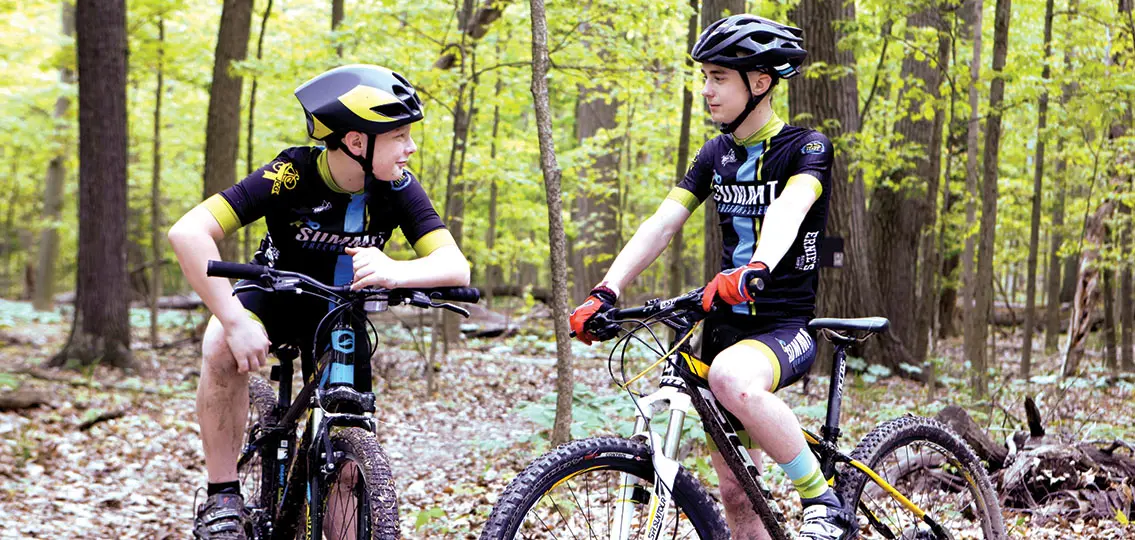As the mother of four sons and the founder of a website, online community, and podcast about raising boys, I hear a lot of tales from the trenches. One common worry of parents of sons is that their tween and teen boys just don’t seem to be motivated.
Instead, they describe sons who “aren’t interested in anything” and complain about their boys’ lack of engagement with life. And compared to boys of ages past—who fought wars while still in their teens or helped support their families with their labor—today’s video-game-playing, couch-sitting, device-connected boys can look pretty apathetic.

Growing Concern for Boys and Young Men
Of course, some boys are doing great. But many boys’ lack of motivation can be striking, especially when compared to girls’ achievement. Despite ongoing worries about girls’ mental health (the self-harm rate among teen girls, for example, has risen sharply in recent years) and boys’ dominance in STEM fields, statistics paint a picture that raises concerns about boys’ chances for adult success.
Here’s why: Boys are less likely to graduate from high school and less likely to attend college than girls.
According to data from the U.S. Bureau of Labor Statistics, 66.9 percent of recent male high school graduates are enrolled in college, compared to 71.3 percent of female high school grads. Men are also less likely than women to earn an associate’s, bachelor’s, or master’s degree.
Girls are also more likely than boys to work during high school and college, and those additional years of job experience combined with more advanced education may explain why more young men are tumbling to the bottom of the income ladder (according to census data). And it may also help to explain why, according to Pew Research, men ages 18-34 are more likely to live with their parents than their female counterparts, a trend that’s more common among less-educated adults.
Can-Do Kids
At the opposite end of the spectrum are boys like Luke Thill, who built his first house—an 87-square foot tiny home located in his parents’ backyard—before he turned 13. Now 16, he regularly speaks at gatherings of tiny-house enthusiasts and is preparing to build his second home.
He hasn’t yet graduated from high school, so no one can say for sure what Luke will do in his young-adult years, but he is full of enthusiasm and motivation and has already developed highly marketable skills in construction, communication, and problem-solving.
Ben and Bean Garner are also actively pursuing their passions and interests. Ben, age 14, built a homemade metal foundry so he could create casted metal projects; his brother, Bean, age 11, races junior dragsters—scaled-down versions of full-sized drag racing cars that still go scary fast. Maxx Ketteler, age 10, also spends hours mastering difficult skills. A trampoline trick enthusiast, Maxx routinely jumps off a 15-foot tower onto a trampoline to nail quadruple backflips.
Each of these boys is independently setting and working toward goals. And each of these confident, engaged, motivated boys is engaged in activities that are beyond what most people consider appropriate or safe.
Could risk-taking be the common denominator here, the missing link between boys and motivation?
Is risk—and parents’ ability to tolerate it—the key to increasing boys’ motivation?
Boys and Risk-Taking
According to behavioral economics, risk involves engaging in a behavior with an uncertain outcome. Generally speaking, teenagers are more tolerant of ambiguity than adults, and that’s by design, according to Natasha Duell, Ph.D., a postdoctoral fellow at UNC-Chapel Hill’s Center for Developmental Science.
“Adolescence is a period when young people are supposed to try things,” says Daniel Romer, Ph.D., director of the Adolescent Communication Institute at the Annenberg Public Policy Center. Compared to adults, teenagers worldwide exhibit what Romer calls “heightened attraction to novel and exciting experiences despite their evident risk.” But while it’s easy to bemoan teenagers’ immature brains, Romer and others suspect that this innate inclination helps children test and refine their burgeoning capabilities.
In other words, risk-taking can be a positive feature of adolescence, rather than a problem that needs to be fixed or eliminated.
Researchers know that dopamine, a potent neurochemical, is released when we take a risk and experience an unexpected reward. Because dopamine triggers feelings of satisfaction and elation, people who successfully take one risk may be more likely to take another.
Kayt Sukel, author of The Art of Risk: The New Science of Courage, Caution, & Chance, noticed this cumulative effect after she and her husband began allowing their then-middle schoolers to ride their bikes to school independently. “They gained a lot of confidence in their own abilities,” says Sukel. “It seems like a silly thing, but navigating by themselves every day motivated them to take on other things.”
We don’t yet have specific data showing that allowing boys more healthy risk-taking would directly improve their educational and young adult outcomes, but one thing is clearly promising: It does tend to build momentum in adolescents.
How Parental Fears Squelch Boys’ Spirits
Allowing children the freedom to pursue goals of their own choosing—and giving them the space to fail, learn, and adapt—is one way we can build their competence and autonomy. To grow, children need to regularly engage in opportunities with uncertain outcomes—in other words, risky activities.
Of course, we parents don’t want our kids harmed emotionally or physically. When they ask to ride their bikes to school, we fear a car or bike accident. When they express a desire to build a house or melt metal, we worry about power tools and burns.
And we know that we can avoid the worst possible outcomes by simply saying no. (Of course, the risk doesn’t have to be extreme or physical. Trying out for a team or play is taking a risk. So is starting a YouTube channel or asking a classmate to a dance.)
What we often fail to realize is the potentially far-reaching impact of those nos. When Michael C. Reichert, Ph.D., author of How to Raise a Boy, recently spent time with his 2½ year old grandson, all the boy wanted to do was jump off the furniture. The child pulled himself onto the couch, climbed onto the arm, and then leapt off the back of the couch onto a bean bag on the floor, over and over again.
“What I perceived is what we call the drive for mastery and competence,” says Reichert, a psychologist and executive director of the Center for the Study of Boys’ and Girls’ Lives. “He’s using his body and discovering what it can do, and it’s enormously interesting and reinforcing to him. Now, if I project my fears or worries onto him and allow myself to control the situation, essentially substituting my judgment for his, he gets the message that he has to operate within my parameters and that what he wants and who he is aren’t important.”
Boys, in particular, frequently receive this message from parents and educators. In our well-intentioned desire to raise good, caring, civilized men, many of us are quick to kibosh loud, active, and physically risky behavior. Unfortunately, we may also be stunting our children’ys gruowith.
“Parents’ need to protect their child can lead to an excessive level of monitoring, which may minimize adolescents’ opportunities to be themselves, explore their environments, and try new things,” says UNC’s Duell.
In other words, we can run a different sort of risk—the risk of extinguishing a boy’s spirit.
How to Build Motivation:
True motivation comes from within. Ultimately, you want your son to trust himself. You want him to set and work toward goals. You can help him discover or regain his motivation by respecting his desires and helping him achieve his goals, no matter how silly or insignificant they might seem to you. Here’s how:
1. Don’t instantly go to no.
That’s 11-year-old Bean Garner’s advice for parents, and it’s a great tip. Instead, ask questions. (Why do you want to use the circular saw?) If his answers are reasonable—and he knows how to safely engage in the activity—say yes.
If you don’t know much about the proposed activity, educate yourself. “Watch a couple of videos on it,” Garner says. You can also talk to other informed adults. Got a kid who wants to play rugby? Go watch a match and chat with the coach afterward.
2. Provide “training wheels.”
Training wheels allow children to gradually learn balance, while developing the confidence and skills they need to ride safely. So, provide your son with necessary safety equipment. Teach him how to safely use tools and materials. (If you don’t possess the necessary skills, find an older teen or adult who can mentor him.) Insist on direct supervision until you’re confident in his abilities.
3. Let them make mistakes.
“I made plenty of mistakes during my build that I know my dad could have probably prevented, but making and learning from those mistakes was a big thing,” says Luke Thill, the tiny-home builder.
Luke’s dad, Greg, purposefully allowed Luke space to make mistakes. “I might have my own ideas of how a task should be completed, but that doesn’t always mean I’m right,” Greg Thill says. “I let him take his own approach as long as it was done safely.”
As a parent, your job is to “give your kids opportunities to learn and grow—and if they mess up, be that softish place to land,” Sukel says. That means responding to mistakes with empathy and curiosity, rather than judgment and shame. “Use it as an opportunity to talk to them,” Sukel says, rather than reverting to lines like, what were you thinking?
Encourage reflection by saying something like, “I can understand why in the moment this seemed like a good idea, but what do you think you could have done differently? What have you learned from this?”
4. Be his ally.
tFind ways to facilitate your son’s interests. As a young boy, Luke Thill loved rock climbing, so when his family went on vacation, his parents made it a point to visit rock-climbing gyms.
When you help your son meet his needs, you build trust and connection, and connection is crucial to boys’ success. According to Reichert, boys who do not feel connected to their teachers often refuse to work and become resentful or disruptive, while boys who feel seen and understood by their teachers are willing to work hard.
“Boys are perhaps even more fragile than girls when it comes to connection,” Reichert says. “Girls often persist, despite weak connections. Boys, if they don’t have a connection, aren’t likely to dig in.”
5. Trust him.
Your son knows his mind and body better than anyone. Judi Ketteler uses that knowledge to calm her nerves when her 10-year-old son leaps off a 15-foot tower onto a trampoline in an attempt to do potentially back-breaking tricks.
“I remind myself, ‘This is who he is,’” Ketteler says. “I just have to trust that he knows his body and what it can do.”
But What About Girls?
Girls, on the whole, gravitate toward less physically risky behavior than boys do. So if risk-taking is healthy for teenagers—and it is—then why are girls doing better in certain outcomes, such as education and young adult independence, than their male counterparts?
We can theorize that the fit of the risk with the child is important, too. Non-physical risks like taking a challenging class or running for student government are applauded in a modern school environment—but not all boys and girls necessarily thrive in these activities. Energetic girls may need sports or other physical activities to exercise their risk muscle, just as many boys do. Similarly, many boys do thrive on the kinds of risk that are rewarded in school and desk jobs, and they may have no aptitude for adrenaline-fueled activities.

“Factors such as life experience—whether or not an adolescent has had a positive or negative experience with a particular behavior or category of behaviors—is going to influence their willingness to pursue a risk,” says Natasha Duell, Ph.D., a postdoctoral fellow at UNC-Chapel Hill’s Center for Developmental Science. “Personality traits such as anxiety or shyness also may influence how approach- or avoidance-oriented a child is.”
In the end, it’s about knowing each child individually.




